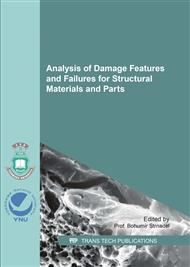p.1
p.7
p.13
p.19
p.25
p.31
p.36
p.42
Development of Evaluation Method that Takes into Account the Effect of the Fine Structure of Adhesive Interface for Delamination Strength of the Packaging Resin
Abstract:
This paper describes a new evaluation method of resin delamination strength at the adhesive interface. Power module consists of different materials. Difference of thermal expansion between the dissimilar materials causes the delamination at their interface. The new pudding-cup test method has been used to evaluate the delamination stress, where singular stress or stress intensity factors are used to evaluate the delamination strength. But it is difficult to consider the effect of micro interface structure or bonded compound. In this study, an interface structure was considered to analyze the delamination deformation at the resin interface to develop a new approach to evaluate the delamination behavior. However, it was difficult to recreate the details in the analytical model. In this study, a method to simplify the interface structure as a simple interface layer was proposed. Deformation value of the interface structure is evaluated in this study. As a result, it was confirmed that the analytical method to simplify the interface structure can be used to simulate the delamination behavior. Deformation absolute value in the delamination points was confirmed to agree with various load points in same material. These results suggested the deformation of the interface layer can be used as a simple parameter to estimate the delamination of a resin structure boundary.
Info:
Periodical:
Pages:
19-24
Citation:
Online since:
June 2017
Authors:
Keywords:
Price:
Сopyright:
© 2017 Trans Tech Publications Ltd. All Rights Reserved
Share:
Citation:


